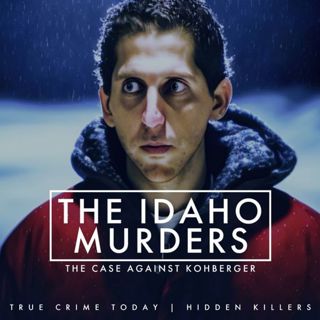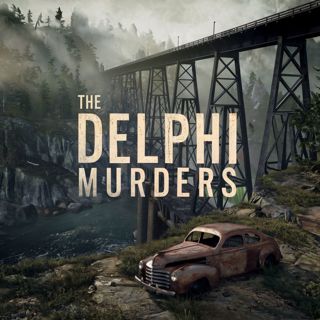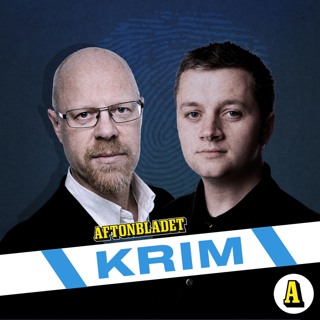
What Happened to Anna Kepner on That Cruise — and Why Her Family’s SECRET History Matters!
What happened aboard the Carnival Horizon the morning 18-year-old Anna Kepner died is disturbing enough on its own. But when you look at the people in that cabin with her — and the long, complicated history surrounding this blended family — the picture becomes even more unsettling. In this episode, Tony Brueski takes you deep into the evolving investigation into the death of Florida teen Anna Kepner, whose body was discovered concealed under a bed, wrapped in a blanket, and partially covered by life vests. The FBI boarded the ship the moment it docked in Miami, and new filings now reveal one of Anna’s minor stepsiblings could face criminal charges. That revelation came directly from court documents filed by Anna’s stepmother, who has since invoked the Fifth Amendment to avoid testimony that could incriminate her or her child. This story reaches far beyond the cruise ship. It reaches into old family records, including a 2008 civil injunction for protection against sexual violence filed against Anna’s father — an injunction filed by a woman whose minor daughter he would later marry. That marriage became Anna’s second stepmother. Years later, a third marriage brought in the children who were on the cruise with her, including the teen now under FBI scrutiny. Only Anna’s grandmother and uncle are speaking out publicly, calling for answers and justice. Meanwhile, her father and stepmother remain nearly silent, offering no clarity, no timeline, and no emotional response aside from frustration with investigators. With the autopsy still pending, the FBI tight-lipped, and a cabin full of unanswered questions, this case has become one of the most complex and emotionally charged cruise-ship investigations in years. Today’s monologue breaks down everything we know — the facts, the filings, the timelines, the dynamics — and asks the question everyone else is afraid to say out loud: how does a family vacation turn into a federal investigation, and why was Anna left hidden under a bed? Stay tuned as we continue following every development in this heartbreaking case. #HiddenKillers #AnnaKepner #CarnivalCruise #TrueCrime #TonyBrueski #Investigation #FBI #Stepmother #Stepbrother #MaritimeCrime #CrimeNews Want to comment and watch this podcast as a video? Check out our YouTube Channel. https://www.youtube.com/@hiddenkillerspod Instagram https://www.instagram.com/hiddenkillerspod/ Facebook https://www.facebook.com/hiddenkillerspod/ Tik-Tok https://www.tiktok.com/@hiddenkillerspod X Twitter https://x.com/tonybpod Listen Ad-Free On Apple Podcasts Here: https://podcasts.apple.com/us/podcast/true-crime-today-premium-plus-ad-free-advance-episode/id1705422872
21 Nov 14min

WSU in the Hot Seat — Did They Ignore the Warnings About Kohberger?
The Goncalves family has taken the next step — not criminal, but civil. They’ve filed claims against Washington State University, arguing the school ignored repeated red flags about Brian Kohberger before the murders in Moscow. And now the question becomes: Does the law agree? In this deep-dive episode of Hidden Killers, Tony Brueski sits down with former prosecutor and defense attorney Eric Faddis to unpack the legal claims, the duty-of-care standards, the foreseeability argument, and the staggering list of complaints that WSU allegedly received long before the killings. Tony and Eric break down the core issues: • What duty does a university have when a graduate student — and teaching assistant — has multiple formal complaints? • Do warnings like “He’s a predator in the making” create legal exposure? • Do stalking-adjacent behaviors — blocking doorways, following students — meet the threshold for negligent supervision? • Does the fact that the murders occurred off-campus, in another state, change the legal calculus? • Could WSU actually be found liable for failing to remove or restrict him? • Or will the university argue: “We couldn’t have seen this coming”? • And is this lawsuit partly about discovery — forcing WSU to release internal emails, HR files, and Title IX records? Eric walks us through what plaintiffs need to prove, what defenses WSU will likely mount, and why this case could have massive implications for universities nationwide if a court allows it to move forward. This is one of the most legally significant developments to emerge from the Moscow murders — and it could reshape university policies around reporting, supervision, and risk. #HiddenKillers #BryanKohberger #WSU #TrueCrime Want to comment and watch this podcast as a video? Check out our YouTube Channel. https://www.youtube.com/@hiddenkillerspod Instagram https://www.instagram.com/hiddenkillerspod/ Facebook https://www.facebook.com/hiddenkillerspod/ Tik-Tok https://www.tiktok.com/@hiddenkillerspod X Twitter https://x.com/tonybpod Listen Ad-Free On Apple Podcasts Here: https://podcasts.apple.com/us/podcast/true-crime-today-premium-plus-ad-free-advance-episode/id1705422872
21 Nov 27min

The Human Mistakes That Shaped Delphi — FBI Behavioral Expert Reveals All
In this episode, Robin Dreeke — former FBI Special Agent and one of the country’s top behavioral analysts — joins me to examine the Delphi murders investigation through the only lens that can truly explain the depositions: human error. Evidence doesn’t make decisions. People do. And the depositions show a team of people overwhelmed, overloaded, and psychologically boxed in. Robin and I break down why investigators contradicted themselves, why memories shifted, why certain information was minimized, and why the entire system seemed to lose its grip on objectivity. Why did one investigator insist the FBI was removed from the case while another had no recollection of it? How did a key BAU assessment about ritual indicators disappear from the internal record? Why did the affidavit reshape crucial witness descriptions? Why were symbolic elements at the crime scene left largely uninterpreted? Why did the investigative team lock onto a lone-offender theory when their own internal testimony doesn’t even agree with it? Robin explains how narrative commitment forms inside a team under intense pressure — how the mind simplifies what is complex, how teams emotionally invest in a theory, and how anything that contradicts that theory begins to feel like a threat rather than a clue. We talk about burnout, tunnel vision, cognitive contamination, leadership vacuums, fragmented communication, and the psychological “reward loop” investigators get from forcing clarity onto chaos. This episode is not about conspiracy or blame. It’s about understanding how very human psychological patterns can quietly shape — and misshape — a homicide investigation. If you want to understand why the state’s clean narrative doesn’t match the messy reality #Delphi #BehavioralAnalysis #RobinDreeke #TrueCrimePodcast #InvestigationReview #CognitiveBias #RichardAllen #HiddenKillers #CrimeAnalysis #JusticeSystem Want to comment and watch this podcast as a video? Check out our YouTube Channel. https://www.youtube.com/@hiddenkillerspod Instagram https://www.instagram.com/hiddenkillerspod/ Facebook https://www.facebook.com/hiddenkillerspod/ Tik-Tok https://www.tiktok.com/@hiddenkillerspod X Twitter https://x.com/tonybpod Listen Ad-Free On Apple Podcasts Here: https://podcasts.apple.com/us/podcast/true-crime-today-premium-plus-ad-free-advance-episode/id1705422872
21 Nov 40min

Rex Heuermann Wasn’t The Lone Gilgo Beach Killer — How Many Are Still “Active”?
Long Island wants to believe it caught the “one monster.” The lone predator. The man who stalked in silence until the handcuffs finally closed. But the truth is far more disturbing: Rex Heuermann didn’t operate in a vacuum. He operated in an ecosystem — one built on silence, vulnerability, and decades of ignored danger. And when you step back far enough, you start to see something bigger than one suspect. You see a pattern. A landscape. A coastline that became a dumping ground for the unnoticed and the unclaimed. In this episode of Hidden Killers, Tony Brueski breaks down why the myth of the “lone wolf” is not just false — it’s dangerous. Because Long Island doesn’t have one predator in its past. Authorities know this. Forensic analysts know this. Anyone who’s looked at the remains found along Ocean Parkway knows this. Different signatures. Different timelines. Different patterns. More than one offender. So how did so many cases slip through the cracks? How did so many victims disappear without triggering urgency? And how many killers learned they could hide in the same shadows Rex allegedly used? Tony dives into the long, uncomfortable history of missing women, unidentified remains, and the decades of law-enforcement fragmentation that made Long Island fertile ground for serial predators. This isn’t about sensationalism — it’s about confronting the reality of a system that allowed multiple offenders to thrive in plain sight. If you think the arrest of Rex Heuermann solved the problem, think again. The arrest solved one case. It didn’t close the chapter on the dozens of unsolved homicides that still haunt the island. Tonight, we pull back the curtain on the bigger truth — the truth officials don’t say out loud: If one predator operated this long without detection, how many others walked the same shoreline? #HiddenKillers #RexHeuermann #LongIsland #TrueCrime #LISK #Investigation #ColdCases #CrimeAnalysis #Podcast #TonyBrueski Want to comment and watch this podcast as a video? Check out our YouTube Channel. https://www.youtube.com/@hiddenkillerspod Instagram https://www.instagram.com/hiddenkillerspod/ Facebook https://www.facebook.com/hiddenkillerspod/ Tik-Tok https://www.tiktok.com/@hiddenkillerspod X Twitter https://x.com/tonybpod Listen Ad-Free On Apple Podcasts Here: https://podcasts.apple.com/us/podcast/true-crime-today-premium-plus-ad-free-advance-episode/id1705422872
21 Nov 17min

Brian Walshe’s Surprise Plea Flip — Will Murder Trial Go Forward?
Right before jury selection — right before the moment everything becomes real — Brian Walshe walked into court and detonated a grenade in his own case. He pled guilty to two critically important charges: misleading investigators and disposing of Ana Walshe’s remains. But he refused to plead guilty to murder. It’s a strange split. A risky split. And a split that reshapes the entire murder trial. In this episode of Hidden Killers, Tony Brueski and Stacy Cole sit down with former prosecutor and defense attorney Eric Faddis to break down exactly what this means — legally, strategically, and psychologically — as the trial begins. Tony and Eric dissect the questions the public is asking: • Why would a defendant admit to moving a body but deny killing the person? • Is this a sign of desperation? A strategy? A narrative play? • Does this strengthen the prosecution’s story of intent and consciousness of guilt? • Is the defense about to pivot into an “accident + panic” explanation? • What happens now that jurors will hear Walshe admit he concealed and destroyed evidence? • Does this force the defense to abandon earlier theories — like Ana leaving on her own? • And what does this mean for sentencing exposure and credibility? Eric breaks down how prosecutors will weaponize these admissions — and how a defense attorney must now scramble to build a narrative around a client who has put himself directly at the scene after death. This isn’t a small procedural detour. This is the trial tipping on its axis. If you want the legal truth — not spin, not rumor — this conversation lays out exactly what this plea tells us, what the prosecution now knows, and what options Walshe has left. #HiddenKillers #BrianWalshe #AnaWalshe #TrueCrime Want to comment and watch this podcast as a video? Check out our YouTube Channel. https://www.youtube.com/@hiddenkillerspod Instagram https://www.instagram.com/hiddenkillerspod/ Facebook https://www.facebook.com/hiddenkillerspod/ Tik-Tok https://www.tiktok.com/@hiddenkillerspod X Twitter https://x.com/tonybpod Listen Ad-Free On Apple Podcasts Here: https://podcasts.apple.com/us/podcast/true-crime-today-premium-plus-ad-free-advance-episode/id1705422872
21 Nov 27min

The Epstein Files Are About to Drop — What Happens Next?!
The Epstein Files are finally coming — not rumors, not fragments, not those half-redacted pages we’ve been fighting over for years, but the full trove of documents that investigators, survivors, journalists, and the public have been demanding. What’s about to be released isn’t just a snapshot of Jeffrey Epstein’s life — it’s the operating manual for how he stayed protected, connected, and strangely influential long after he should’ve been radioactive. In this episode of Hidden Killers with Tony Brueski, we dive into what the public can actually expect when the files hit daylight. These aren’t neat little lists or dramatic reveal reels. They’re tens of thousands of pages from multiple eras, multiple agencies, and multiple investigations that never told the same story out loud. They include travel logs, correspondence, email chains, financial statements, investigative notes, victim interviews, and records from years when Epstein was already a registered offender — yet still moving through the world like a man who had everything to offer and nothing to fear. We’re looking at what will likely be revealed, what absolutely will not be released due to legal protections and redactions, and the much bigger picture of who enabled Epstein to operate for so long. This isn’t just about names on a page. It’s about the systems that bent around him. The institutions that ignored warnings. The high-profile figures who kept showing up in his world. The gaps that investigators noticed and the public never got to see. This isn’t closure. It’s exposure. And once these documents are out, the old explanations won’t work anymore. The world is finally going to see the scaffolding of the Epstein machine — and the uncomfortable truth about who helped keep it standing. Subscribe for ongoing updates as the files roll out and the fallout begins. #HiddenKillers #EpsteinFiles #JeffreyEpstein #TrueCrime #Investigations #Accountability #TonyBrueski #BreakingNews #UnsealedDocuments #JusticeSystem Want to comment and watch this podcast as a video? Check out our YouTube Channel. https://www.youtube.com/@hiddenkillerspod Instagram https://www.instagram.com/hiddenkillerspod/ Facebook https://www.facebook.com/hiddenkillerspod/ Tik-Tok https://www.tiktok.com/@hiddenkillerspod X Twitter https://x.com/tonybpod Listen Ad-Free On Apple Podcasts Here: https://podcasts.apple.com/us/podcast/true-crime-today-premium-plus-ad-free-advance-episode/id1705422872
21 Nov 18min

Two Cases Just Shifted — Brian Walshe’s Plea Flip & WSU Under Kohberger Fallout Fire
Two major true-crime cases just took sharp, unexpected turns — one in the courtroom, one in the civil arena. First, Brian Walshe blindsided the court by pleading guilty to disposing of Ana Walshe’s remains and misleading investigators — but still maintaining he didn’t kill her. It’s a move that redefines the entire murder trial and forces huge strategic shifts for both sides. Then, across the country, Washington State University is facing legal heat. The Goncalves family has filed a civil claim arguing WSU ignored repeated warnings about Brian Kohberger before the Moscow murders. More than a dozen complaints. A professor calling him a future predator. Students saying they felt trapped and unsafe. The question now is simple: Does the law say the university should have done more? On today’s episode of Hidden Killers, Tony Brueski sits down with legal analyst Eric Faddis to break down both cases: • Why did Walshe plead guilty to these charges but not murder? • Does this strengthen the prosecution’s theory — or hand the defense a new angle? • What does the jury hear now, and how will it shape perception? • And in the WSU civil case — what duty does a university owe? • What evidence matters most? • Does foreseeability apply when the crime occurred off-campus at another school? • And is the real goal here discovery — forcing WSU’s internal files out into the light? Two cases. Two seismic shifts. One conversation that lays out the stakes, the law, and the fallout. #HiddenKillers #TrueCrime #BrianWalshe #BryanKohberger #WSU Want to comment and watch this podcast as a video? Check out our YouTube Channel. https://www.youtube.com/@hiddenkillerspod Instagram https://www.instagram.com/hiddenkillerspod/ Facebook https://www.facebook.com/hiddenkillerspod/ Tik-Tok https://www.tiktok.com/@hiddenkillerspod X Twitter https://x.com/tonybpod Listen Ad-Free On Apple Podcasts Here: https://podcasts.apple.com/us/podcast/true-crime-today-premium-plus-ad-free-advance-episode/id1705422872
21 Nov 54min

Holeman’s Testimony EXPOSES How Badly Delphi Was Investigated
In today’s episode, we take a hard, relentless look at Lieutenant Jerry Holeman’s testimony in the Delphi murders case — and what it reveals about the investigation that led to the conviction of Richard Allen. This isn’t speculation. This isn’t rumor. This is straight from the sworn record: the contradictions, the assumptions, the missing analysis, and the investigative gaps that no one watching the press conferences ever got to see. Holeman was positioned as one of the state’s anchors — a senior Indiana State Police investigator expected to bring clarity and confidence to a deeply complex double-homicide case. Instead, his testimony exposes just how shaky the investigative foundation really was. Sticks placed on the bodies of Abby and Libby were dismissed as “camouflage,” even though they concealed nothing. Then, suddenly, the state floated a psychological term — “undoing” — that had never appeared in the investigative record, and Holman endorsed it without hesitation. His certainty about a “single offender” wasn’t based on forensic proof. It came from a belief he stated on the stand: that in multi-offender crimes, “someone usually talks.” Yet the case file contains exactly that — a suspect making disturbing comments investigators inexplicably labeled “no further action.” We dive into everything Holman didn’t explain: why symbolic elements were barely analyzed, why alternative suspects weren’t vetted, why forensic opportunities were missed, why the bullet lacked field documentation, why major investigative questions were replaced with assumptions, and why his testimony often stood in open conflict with other investigators on essential questions like the FBI’s role. This isn’t about guilt or innocence. It’s about whether the investigation that shaped the entire Delphi narrative was thorough, consistent, or grounded in evidence. And Holman’s testimony makes it undeniably clear: the holes aren’t small. They’re foundational. If you care about the truth in Delphi, this breakdown matters. #Delphi #DelphiCase #TrueCrime #RichardAllen #InvestigativeAnalysis #HolemanTestimony #CourtRecord #JusticeSystem #HiddenKillers #TrueCrimeCommunity Want to comment and watch this podcast as a video? Check out our YouTube Channel. https://www.youtube.com/@hiddenkillerspod Instagram https://www.instagram.com/hiddenkillerspod/ Facebook https://www.facebook.com/hiddenkillerspod/ Tik-Tok https://www.tiktok.com/@hiddenkillerspod X Twitter https://x.com/tonybpod Listen Ad-Free On Apple Podcasts Here: https://podcasts.apple.com/us/podcast/true-crime-today-premium-plus-ad-free-advance-episode/id1705422872
21 Nov 19min





















